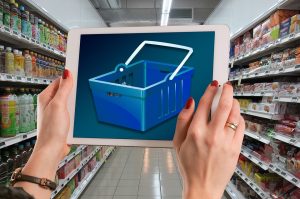What is consumer demand? Consumer demand stems from demand theory, which is an economic principle that relates the relationship between the prices of items on the market and the demand for those items from consumers. As consumer demand for a certain product or service goes down, so does the price.
What is Consumer Demand?
Demand Theory
The simple definition of consumer demand is the amount of an item that consumers currently want/need. When the pandemic hit in March, the demand for things such as toilet paper went up. There was high consumer demand for many items during this time, such as canned goods, toilet paper, disinfectants, and hand sanitizer. During this time we saw price gouging occur on several items because there was more of a demand for these things than there were products available.
Demand theory is a core theory in microeconomics. The point of the theory is to answer questions about how much consumers want things and how demand is impacted by things such as satisfaction and income levels. Companies use demand theory by considering the overall satisfaction of their consumers at different price levels. They use this information to determine how many products to make and what price point to charge.
While the idea behind consumer demand seems relatively simple, there are many factors that play into this economic theory, making it more difficult. Consumer tastes, choices, and preferences all have to be considered when evaluating the demand for a product or service. Businesses must carefully analyze all of these things if they are going to grow and survive in a market that is highly competitive.
The market economy is ruled by the simple laws of supply and demand as this is what ultimately determines the prices of services and goods. When the supply is equal to the demand, prices for items are in an equilibrium state. When the demand is higher than the supply, as we saw during the beginning of the pandemic, prices will increase, reflecting scarcity. On the other hand, when the consumer demand is lower than what was expected, prices of items will fall because of a surplus.
Key Points
Demand theory utilizes consumer demand in order to reflect the prices in the market. Demand theory states that the more an item costs, with everything else being equal, the less of it will be demanded, which initiates a demand curve that slopes downward.
In the same theory, the higher the demand for a product or service, the higher the price is going to be based on the supply of that particular item.
There are times as mentioned above, that consumers will purchase more or less of a service or good because of factors other than just price. When this happens, it is called a change in demand. This refers to a shift in the demand that occurs as a result of a change in consumers’ income, taste, or preferences. For example, when the stay at home order was issued, demand increased for groceries and a decrease in demand for dining out.
Another example of how consumer demand can change is when a person receives a raise. This leads to them having more disposable income to spend on things that they want even if prices do not fall. A larger impact on the economy would be when the federal minimum wage is raised. This provides more people with more money to spend in the market.
Overall, consumer demand is simply the demand of the people for a good or service. This can fluctuate based on many factors and as a business, it is important to stay on top of consumer demand trends.
Christopher Morgan Fulfillment Center Services
Christopher Morgan Fulfillment has access to more than 600,000 square feet of professionally managed, secure, dry storage space, warehousing & distribution in Milwaukee and in all regions of the United States.
Our facilities are located in:
- New Berlin, Wisconsin
- Milwaukee, Wisconsin
- Atlanta, Georgia
- Los Angeles, California
- East Brunswick, New Jersey
 Direct To Customer
Direct To Customer
- Direct Response
- E-commerce Fulfilment
- Catalog/Print Advertising
- Continuity/Membership/Awards
- Customer Contact Center
 Retail Distribution
Retail Distribution
- Big Box Retail Distribution
- Home Shopping
- Electronic Data Interchange (EDI)
- Experts at Retail Compliance
- Partner Testimonials
BUSINESS TO BUSINESS
- Warehousing & Distribution
- Lot Control
- Kitting/Light Assembly
- Inspection Services
- Repackaging & Rework Services

